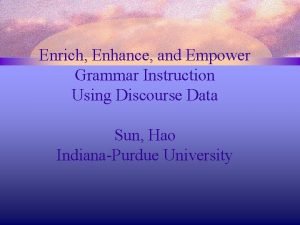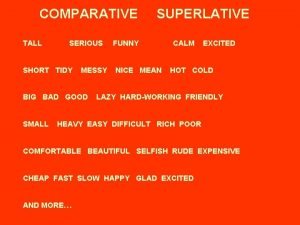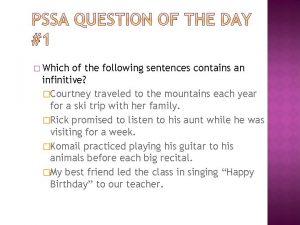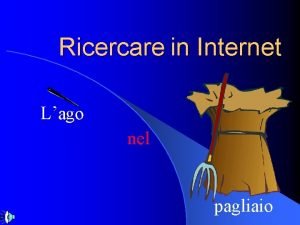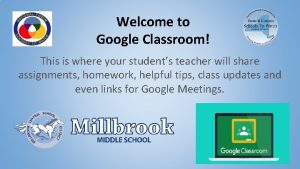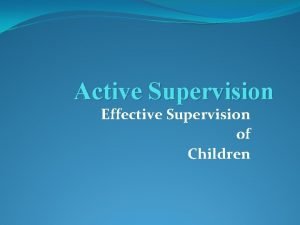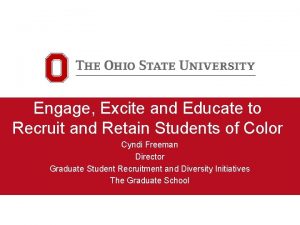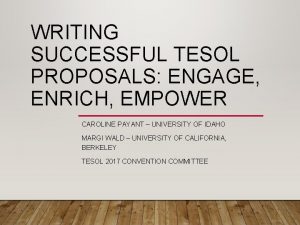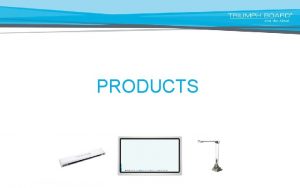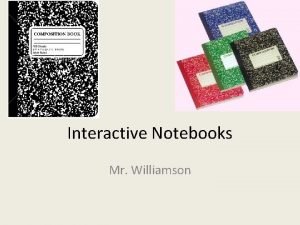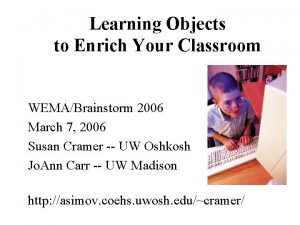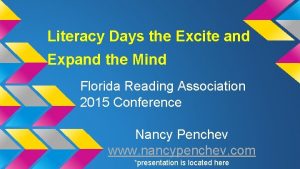Welcome Engage Enrich and Excite An Interactive Classroom












- Slides: 12

Welcome

Engage, Enrich, and Excite: An Interactive Classroom Model for Adult Education Presented by Julie Brown, MLS, TESOL Cambridge University Press Julie. Brown@dcccd. edu

The Traditional Classroom?

Graph taken from Richard Mayer’s research on learning, based on his studies regarding how the brain works and the ability to pay attention to instruction. His research shows that learning experiences need to be as interactive as possible to boost retention. The research indicates that the human brain, on average, has the capacity to pay attention for about 10 -12 minutes within an hour. Human attention peaks at about 12 minutes, particularly if it is a lecture. The learners will space out and come back to attention but not at the level they did at the beginning of the lecture. Attention span can be reignited by incorporation of interactive activities.

Choose the appropriate seating for the class type and level. (Group arrangements good for stations also. )

Creating an Interactive Class Environment We want students to participate fully in the learning process while using as many skills as possible. Multisensory/kinesthetic learners

Creating an Interactive Class Environment Step 1. Move away from the traditional lecture style v Initiate communication from the moment class begins. v Change the ratio of lecture to practice. Try the 80/20 Rule or (25/50/75/100) v Pay attention to seating and switch things up. v Stimulate students’ critical thinking skills by utilizing Socratic questioning techniques throughout your lesson. v Allow students the opportunity to think and self-correct. Five count! v The key is to increase engagement, further understanding, and boost long-term retention of material. v Try the flipped classroom or blended classroom models. v Mini-lecture - activity, mini-lecture - activity… v Be mindful of the 3 P’s (Present, Practice, and Produce) and the 4 C’s (Communication, Collaboration, Critical thinking, and Creativity)

Creating an Interactive Class Environment Step 2. Make yourself a facilitator v Provide resources and techniques so students can learn on their own. How do you feel about homework? Encourage work outside of class. v Incorporate pair and group activities. Use Think-Pair-Share cooperative discussion strategies. v Poker Chip Method… v Use self-assessment techniques such as knowledge inquiry, exit tickets, or K-W-L (Know, Want to Know, Learned) - metacognition. v Forrest Gump System… v Utilize technology in a meaningful way to stimulate knowledge acquisition – Ed. Puzzle, Padlet, Powtoons, etc.

What is the affective filter?

Creating an Interactive Class Environment Step 3. Have some fun – reduce the affective filter v Open the class with a fun and interesting warm up. v Incorporate physical activity, manipulatives, realia, and visuals. v Highlight holidays and cultural activities. v Take a field trip. v Write on the board; don’t talk to the board. v Model everything! v Incorporate crafts, music, dancing, acting, dress up, TV, videos, etc. v Add games and interactive activities. Technology! v Close the class with something fun and interesting – fun sandwich. Exit tickets…

ANY QUESTIONS?

Thank you! Julie Brown, MLS, TESOL Julie. Brown@dcccd. edu
 Grammar to enrich and enhance writing
Grammar to enrich and enhance writing Enrich health and psychology
Enrich health and psychology Prefix of excite
Prefix of excite Clearly comparative and superlative
Clearly comparative and superlative Which sentence is punctuated correctly some bright objects
Which sentence is punctuated correctly some bright objects Prepare/enrich facilitator manual
Prepare/enrich facilitator manual Enrich
Enrich Classroom strategies for interactive learning
Classroom strategies for interactive learning Excite motore di ricerca
Excite motore di ricerca Gentleman in great expectations
Gentleman in great expectations Btech smart classes
Btech smart classes Welcome to google classroom
Welcome to google classroom What does active supervision mean
What does active supervision mean
